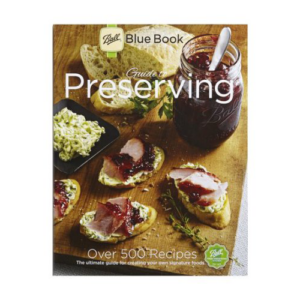Canning Season is Here! Has Your Gauge Been Tested?
go.ncsu.edu/readext?879434
en Español / em Português
El inglés es el idioma de control de esta página. En la medida en que haya algún conflicto entre la traducción al inglés y la traducción, el inglés prevalece.
Al hacer clic en el enlace de traducción se activa un servicio de traducción gratuito para convertir la página al español. Al igual que con cualquier traducción por Internet, la conversión no es sensible al contexto y puede que no traduzca el texto en su significado original. NC State Extension no garantiza la exactitud del texto traducido. Por favor, tenga en cuenta que algunas aplicaciones y/o servicios pueden no funcionar como se espera cuando se traducen.
Português
Inglês é o idioma de controle desta página. Na medida que haja algum conflito entre o texto original em Inglês e a tradução, o Inglês prevalece.
Ao clicar no link de tradução, um serviço gratuito de tradução será ativado para converter a página para o Português. Como em qualquer tradução pela internet, a conversão não é sensivel ao contexto e pode não ocorrer a tradução para o significado orginal. O serviço de Extensão da Carolina do Norte (NC State Extension) não garante a exatidão do texto traduzido. Por favor, observe que algumas funções ou serviços podem não funcionar como esperado após a tradução.
English
English is the controlling language of this page. To the extent there is any conflict between the English text and the translation, English controls.
Clicking on the translation link activates a free translation service to convert the page to Spanish. As with any Internet translation, the conversion is not context-sensitive and may not translate the text to its original meaning. NC State Extension does not guarantee the accuracy of the translated text. Please note that some applications and/or services may not function as expected when translated.
Collapse ▲
Canning is a great way to preserve your garden bounty and experience delicious Summer foods all year long. How does canning work? The canning process removes oxygen; destroys enzymes; prevents the growth of undesirable bacteria, yeasts, and molds; and helps to form a high vacuum in jars. There are some risks to be aware of. Low acid foods must be pressure canned at temperatures between 240 to 250°F.
To ensure safety of home food preservation, always follow a research-tested recipe.
Below are some great resources with evidence-based recipes and information regarding canning:
–National Center for Home Food Preservation (NCHFP) Provides current research-based recommendations for most methods of home food preservation.
–USDA Complete Guide to Home Canning Provides research-tested recipes in addition to safe food preservation information.
-So Easy to Preserve – Provides research-tested recipes on preserving food: canning, pickling, making jelly/jam, freezing and drying.
–Ball Blue Book, 37th edition- Published 2020. More than 75 tested-recipes, with tips for better fresh preserving. 
Did you know that your dial gauge pressure canner should be tested each year for accuracy?
Gauges that read high cause under-processing and may result in unsafe food. Gauges that read low cause over-processing. Pressure adjustments can be made if the gauge reads up to 2 pounds high or low, however gauges that differ by more than 2 pounds will need to be replaced.
Call the N.C. Cooperative Extension, Cherokee County Center at 828-837-2210 x5 or email Marlana Baker, Extension Agent Family & Consumer Sciences, at marlana_baker@ncsu.edu to request information or arrange a time for canner testing. We have set a date for Dial Gauge Canner testing with information below, however if this does not work with your schedule, please contact us. Bring only your dial-gauge pressure canner lid.





